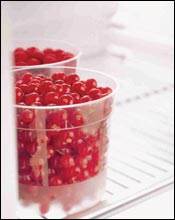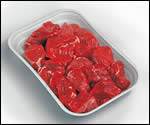Engineering Resins
New Additives and Colorants To Debut at K 2007
The world’s largest plastics show next month in Dusseldorf will highlight an unusual mix of new polymer additives, including some based on novel chemistries that reportedly set new levels of performance.
Read MoreWhat's New at the Show in MATERIALS
The major thrust in new materials at K is engineering thermoplastics for automotive, appliance, medical, and electrical/electronic parts.
Read MoreRecycling E-Plastics New Material Stream Brings Its Own Set of Problems
Brominated flame retardants restrict its use. Most now goes to China, but new recycling processes promise to ‘clean up’ e-waste.
Read MorePP Prices Drop While Others Rise
Domestic resin demand was moderate to slow in the second quarter, but exports were booming and many feedstock prices were rising.
Read MoreSABIC Buys GE Plastics
General Electric Co., Fairfi eld, Conn., has agreed to sell its GE Plastics business, based in Pittsfi eld, Mass., to Saudi Basic Industries Corp. (SABIC) of Riyadh, Saudi Arabia, for $11.6 billion.
Read MoreMoving On Up
Prices of polyolefins were moving up last month and more increases were on the way.
Read MoreExtreme Plastics New Contenders Push Limits Of Heat and Chemical Resistance
The top of the thermoplastic performance pyramid is growing more crowded and more finely differentiated due to heightened demand for lighter, tougher alternatives to metals, ceramics, and thermosets.
Read MoreHikes on the Way
Prices of PP, PVC, and PET moved up last month and new price hikes were under way for PE, PP, PS, PVC, and PET. PE prices up 3¢Polyethylene prices moved up 3¢/lb in March, bringing the total increase this year to 6¢/lb.
Read MoreYour Business Pricing Update - April 2007
Polyolefins, PET, and PVC were on the way up last month, as resin suppliers sought to recover margins shrunken by lackluster demand and higher feedstock costs.
Read MoreBiopolymers Strive to Meet Price/Performance Challenge
High expectations for biopolymers— an emerging class of materials derived at least in part from biological activity—are being tempered by the realities of the marketplace.
Read More














